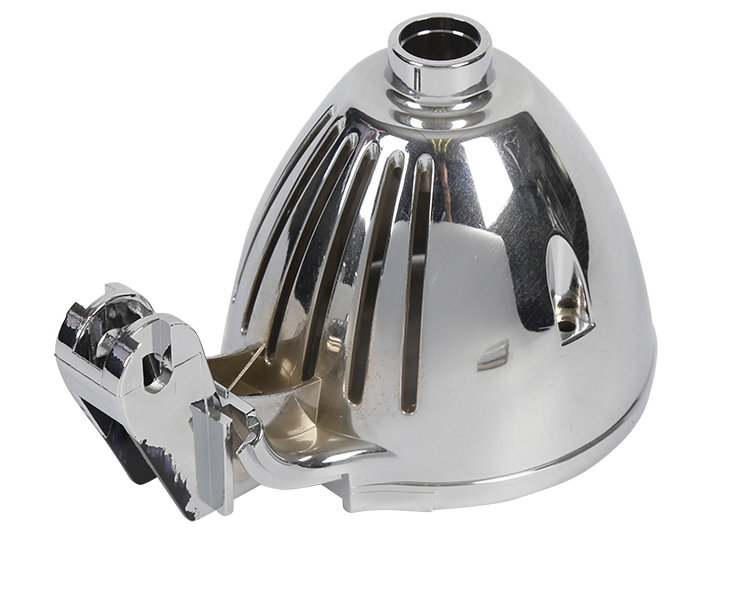In the broadest sense of the concept of electroplating, electroplating is very complex and involves a wide range of processes.
1. Electroplating
Depending on the components required for the coating, there are single metal electroplating and alloy electroplating of chromium, gold, silver, tin and iron. Where two or more components are required for the plating, this is called alloy plating. If two metals are required it is called a binary alloy, if three are required it is a ternary alloy and if more than three are required it is a multi-alloy. Some components of the alloy may also be non-metals, such as phosphorus and boron. Binary alloys are copper alloys in brass (copper-zinc), bronze (copper-tin), nickel alloys in nickel-iron, nickel-phosphorus, zinc alloys in zinc-iron, zinc-nickel, etc.; ternary alloys are Copper – zinc – tin ternary imitation gold, nickel-cobalt – phosphorus, zinc – iron-nickel and so on. When there is another insoluble inorganic or organic compound in the alloy that manages to co-deposit with the metal (e.g. aluminium trioxide, silicon carbide, lanthanum oxide, PTFE, etc.), it is called composite electrodeposition. When the size of the electrodeposited metal crystals or complexes is as small as a nanometre (1 nm = 10-9 m) it is also called nano-plating or nano-composite plating.
Depending on the form of metal ions present in the plating solution, it can be divided into simple salt plating and complex (formerly called complex) plating. In most cases, alloy plating and alkaline plating are complex platings and in a few cases, alloy plating (e.g. zinc-iron, zinc-nickel, nickel-phosphorus) can also be obtained from slightly acidic simple salt plating solutions.
Depending on the acidity of the plating solution, it can be divided into three main categories: strongly acidic (e.g. chromium plating, bright acid copper), weakly acidic (e.g. zinc, nickel, nickel-iron, nickel-phosphorus) and alkaline (e.g. cyanide plating, zincate plating). Depending on the main use of the plating, it can be divided into anti-corrosive plating (e.g. galvanising on iron), decorative protective plating (e.g. multi-layer nickel, decorative chrome, imitation gold plating, various bronze and gunmetal plating, etc.), functional plating, etc. Functional plating can be divided into wear-resistant, friction-reducing, electrically conductive, thermally conductive, welding, reflective, matting and another plating.
According to the crystalline form and grain size of the metal in the plating, the plating is divided into crystalline, amorphous, microcrystalline, nanocrystalline, etc.
From the substrate itself conductive or not is divided into non-metal (such as plastic, ceramic, glass, etc.) plating and metal plating.
When the plating is particularly thick or when electrodeposition is used to manufacture the product, it is also known as electroforming. Another type of method of obtaining non-metallic coatings by electrodeposition is called electrodeposition (e.g. decorative electrodeposition, engineering electrodeposition, etc.).

2. Electroless plating
The method of obtaining metal, alloy or composite coatings without the use of a power source is called electroless plating. There are two main categories.
2.1 Chemical plating
Electroless plating, where the reducing agent (e.g. formaldehyde, hypophosphite) itself is oxidised to provide the electrons required to reduce the main salt metal ions to metal atoms, is known as chemical reduction plating, or chemical plating for short. Chemical plating can be a single metal (e.g. chemical copper plating), an alloy (e.g. nickel-phosphorus) or a composite plating. Chemical plating gives a thicker layer and is an indispensable process for non-metallic electroplating.
2.2 Displacement plating
The use of a replacement reaction to obtain a thin layer of metal with a higher potential than the base metal on the surface of a metal part is called replacement plating, also known as dip plating. For example, copper and nickel immersion on steel parts, zinc and zinc alloys on aluminium parts, silver immersion on copper parts, etc.
3. Transformation film formation
This is a process in which the base or plated metal is involved in the formation of other forms of film. The formation of conversion films can be done by electrolytic methods (e.g. various anodic oxidation, AC oxidation, micro-arc oxidation, hard oxidation of aluminium parts, electrolytic passivation of silver plating, the electrolytic colouring of stainless steel, etc.) or chemical methods (e.g. bluing, phosphating, room temperature blackening of steel parts, passivation of copper parts, passivation after galvanisation, tin plating, etc.). Sometimes as a single process, sometimes as a post-plating treatment.
4. Surface cleaning of workpieces
This refers to the removal of oil, rust, etc. from the surface of the part so that the surface of the part is clean and free of foreign matter. Some users only require the parts to be degreased to remove the salt scale after heat treatment, or just pickling (such as removing the oxide layer of stainless steel after argon arc welding, etc.) and no further processing. In most cases, the workpiece surface cleanliness treatment is also an essential pre-plating process.
5. Workpiece surface roughness, the brightness of the transformation
5.1 Brightening and levelling treatment
Mechanical treatment (e.g. mechanical grinding and polishing of aluminium, stainless steel, Plexiglas, etc.), chemical treatment (e.g. chemical polishing of aluminium, copper, stainless steel, etc., bright pickling without yellow smoke), electrolytic treatment (e.g. electrolytic polishing of aluminium, stainless steel), etc. They can be pure processing, or they can be pre- or post-plating treatment (e.g. after galvanising out the light) process. Sometimes a combination of mechanical and chemical or electrochemical methods is required, sometimes in combination with the formation of a conversion film (e.g. machine polishing of copper parts, chemical polishing followed by passivation).
5.2 Micro-roughing treatment
For example, chemical sanding for matting or decorative aluminium parts, non-glossy hard chrome plating after sandblasting of steel parts, pre-plating treatment to obtain matt plating, electrolytic cutting and refurbishing of files, etc.
In summary, the processing categories involved in electroplating are complex and will grow, with many different processes in each category, and new developments and improvements in specific processes.

